
How IOT works, from an ERP perspective.
Definition:
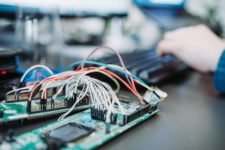 Simply put, IOT (Internet Of Things) is a system where machines talk to each other without the need for users to get involved.
Simply put, IOT (Internet Of Things) is a system where machines talk to each other without the need for users to get involved.
It’s used to provide next-generation automation by identifying the state of a system with the help of various devices and sensors, and today major applications for IOT include monitoring and analysis.
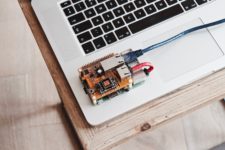 A typical IOT system comprises of 4 components:
A typical IOT system comprises of 4 components:
- Data Source
- Data Transfer Medium
- Data Processing
- Client (User interface)
Data Source:
It is the source that generates/collects data from the environment, and it can be any type of sensor (temperature sensor, pressure gauge, flow meter, etc.), any type of machine (weighing machine, CNC machine, etc.) or any type of PLC controllers.
The basic function of this source is to generate data about the state of the system, for example: A steam turbine system consists of many temperatures, pressure, and flow sensors, this sensor understands the state of a steam turbine and generates data about the temperature and pressure of turbine.
Data Transferring Medium:
This component’s main function is to fetch the data from the data sources and send data to the cloud then this data goes for further processing.
This data can be sent to cloud by several mediums like: Cellular, Ethernet, Satellite, etc. Which medium is used completely depends upon the availability and compatibility with the source of data.
For example: For one of our applications we used a Raspberry Pi computer as data transferring medium to connect with a PLC, and it fetches the data via. a Python Script and sends that data to a server.
Data Processing:
This component compares the data through some conditions and performs the actions accordingly. This action can be either monitoring, alarming, performing tasks like shutting down the system or activating another process, and typically is comprised of algorithms that contain if-else statements.
In my experience, the most popular platform for IOT data processing has been AWS IOT (Amazon Web Services IOT.) AWS IOT provides a platform that uses the MQTT protocol for data transferring, allowing users to develop their own algorithms and define custom actions that meet their requirements.
For example: In one of our applications we monitor the temperatures and pressures of a Steam Turbine. In applications like this, users can define a certain range for temperatures and the actions to take if temperature crosses that range.
Client (User Interface):
It’s the component that shows the processed data to the user in a presentable form, and typically makes use of bar graphs, pie charts, and other graphical objects. It also shows notifications of alarms and messages, and provides a user interface to respond to these back to the data source.
For example: In our Steam Turbine system, if blades temperature crosses the given range, our Turbine needs to trip immediately. Hence we made an alarming system that sends alerts via notification and messages, and with the help of user interface users can now send trip signals to the PLC.
Summary:
In summary, from my perspective as an ERP Solutions provider, utilizing IoT not only makes interfacing with automation systems easier, but it also adds an extra layer of safety to the system by integrating alarming and emergency trip systems.
Written by Nilesh Soni
Provider of custom ERP solutions and Freelance Writer
Edited by Shawn Tierney
Have a question? Join our community of pros to take part in the discussion! You'll also find all of our automation courses at TheAutomationSchool.com.
Sponsor and Advertise: Get your product or service in front of our 75K followers while also supporting independent automation journalism by sponsoring or advertising with us! Learn more in our Media Guide here, or contact us using this form.
- How To Register A Thing In AWS IoT - June 4, 2020
- IoT Architecture: Allen-Bradley PLCs to Amazon AWS - April 30, 2020
- Getting A-B PLC Data Into A Raspberry Pi - October 23, 2019

Discover more from The Automation Blog
Subscribe to get the latest posts sent to your email.


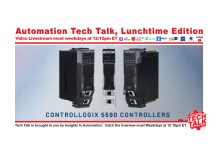
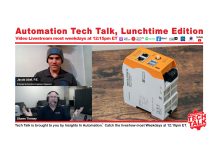
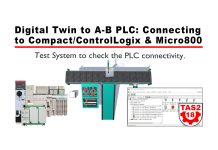
Great blog!
Great article!
Raspberry pi has been the best microcomputer I’ve used for home automation. Would be great to do more projects… who’s interested???
Thanks Temi,
I have also been using raspberry pi 3b+ for our industrial automation projects and its been a great experience.
And definitely I would love to work with you for industrial/home automation projects.
Please give me your contact details or you can email me at nilesh23.soni at gmail dot com.